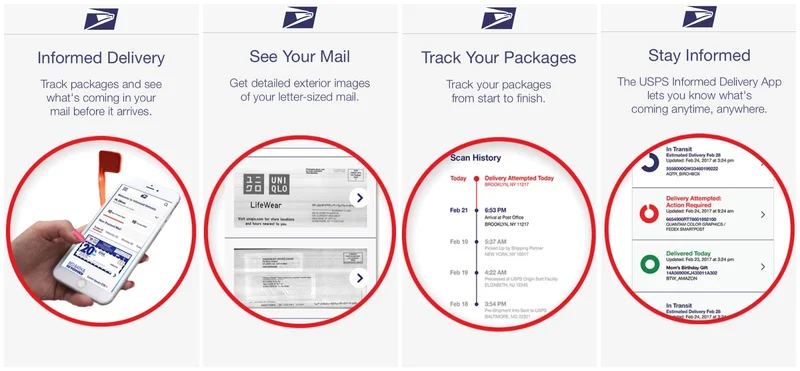I still remember the distinct, papery smell of a letter from a friend, the slight heft of it in my hand. For a generation raised on the ephemeral glow of screens, the idea of physical mail feels almost archaic, a relic from a bygone era. We were told the mailbox was dead, a rusty container for junk mail and bills. And for a while, I believed it.
Then, on October 3rd, the United States Postal Service pushed a quiet update to its Informed Delivery app. The release notes called it a "redesign," an "all-new" experience. Most people, if they noticed at all, probably shrugged. A slicker interface for tracking your Amazon packages? A better way to see which credit card offers are on their way? Great.
But when I downloaded it and started exploring not just what it is, but what it represents, I had to sit back in my chair. This is the kind of breakthrough that reminds me why I got into this field in the first place. Because what I see isn't just a prettier package tracker. I see the blueprint for a new kind of digital citizenship. I see the foundation for a trusted, unified, and secure public square in a digital world overrun with noise, fraud, and anonymity. The humble mail app just became the most important piece of civic technology in a decade.
The Digital Handshake We Didn't Know We Needed
Let's be honest. The core features of the Informed Delivery app (How to Use USPS Informed Delivery App – Check Your Mail & Packages Online - HowToiSolve) have always been more of a novelty than a necessity. Seeing a black-and-white scan of your incoming mail is neat, but it hardly changes your life. Tracking packages is useful, but FedEx and UPS have been doing that for years. You can even buy stamps or schedule a pickup. These are all fine, functional tools for interacting with a 250-year-old logistics network.
But we've been looking at the wrong things. The revolutionary feature, the one that this redesign seems poised to finally leverage, has been hiding in plain sight since day one: the sign-up process. To use Informed Delivery, you don't just create a password. You have to verify your identity against a physical, USPS-verified address. That link—the unbreakable chain between your digital account and your real-world front door—is the whole game.
This creates what we in the industry call a "high-assurance identity credential"—in simpler terms, it's a digital handshake that proves your online self is tied to a real-world, verifiable mailbox. Think about it. It’s not a social media profile that can be faked. It’s not an email address that can be spoofed. It's you, at your home. This isn't an app for mail; it's an identity engine powered by the most extensive and trusted last-mile delivery network on the planet.

What does this redesign signal? While the specifics of the new user interface are just emerging, the framing of it as "all-new" suggests a profound shift in ambition. Are they simply making it easier to see your mail, or are they building a platform? A platform that treats your physical address as the ultimate root of trust? This is a fundamental pivot from a service app to an infrastructure app, and almost no one is talking about it.
The Mailbox as the New Civic Square
This is where my mind starts racing, and I need you to come along with me. Forget tracking packages for a moment. Imagine what you can build on top of a system where nearly every household in America has a free, secure, government-verified digital identity tied to their physical home.
Imagine a world where you can register to vote through this app with a single tap, with your identity and address already confirmed, eliminating entire categories of fraud and administrative error. Imagine receiving your tax documents, your car registration renewal, or even your passport directly to a secure digital locker inside this app, authenticated by the same system that delivers your social security card. Imagine a single, trusted point of contact for everything from federal aid applications to local election ballots to secure messages from your doctor—it’s a paradigm shift in how we think about government services, moving them from bureaucratic nightmares into a seamless, verified, and user-centric experience that finally lives up to the promise of the digital age.
This is the public option for the internet age. It’s the digital equivalent of the public library or the national highway system—a piece of foundational infrastructure that enables commerce, communication, and civic life. It’s a bulwark against the chaos of the commercial internet, where our identities are sold to the highest bidder and deepfakes erode our sense of reality. The USPS isn't a tech company; it's a public service. Its only motive is universal delivery. Could that mandate extend from the physical to the digital?
Of course, this vision carries an immense weight of responsibility. The potential for a centralized, government-verified identity system raises profound questions about privacy, data security, and the potential for misuse. How do we build the guardrails to ensure this public utility serves the people, not the state or corporations? How do we guarantee that access is equitable for all Americans, regardless of their technical literacy or location? These aren't afterthoughts; they are the central design challenges we must confront right now, as this new foundation is being laid.
This Isn't About Mail Anymore
So, yes, the USPS updated its app. On the surface, it’s a minor story, a footnote in the relentless churn of the tech news cycle. But I urge you to look deeper. This isn't about a better user interface for seeing your junk mail. This is a quiet, profound pivot. It's the transformation of a simple logistics tool into a foundational layer of our national digital infrastructure. The last mile of the physical delivery network is about to become the first mile for a new kind of trusted civic engagement. We’re not just watching a redesign; we’re witnessing the birth of the digital post office, and it might just be the thing that helps us rebuild trust in a fractured world.

